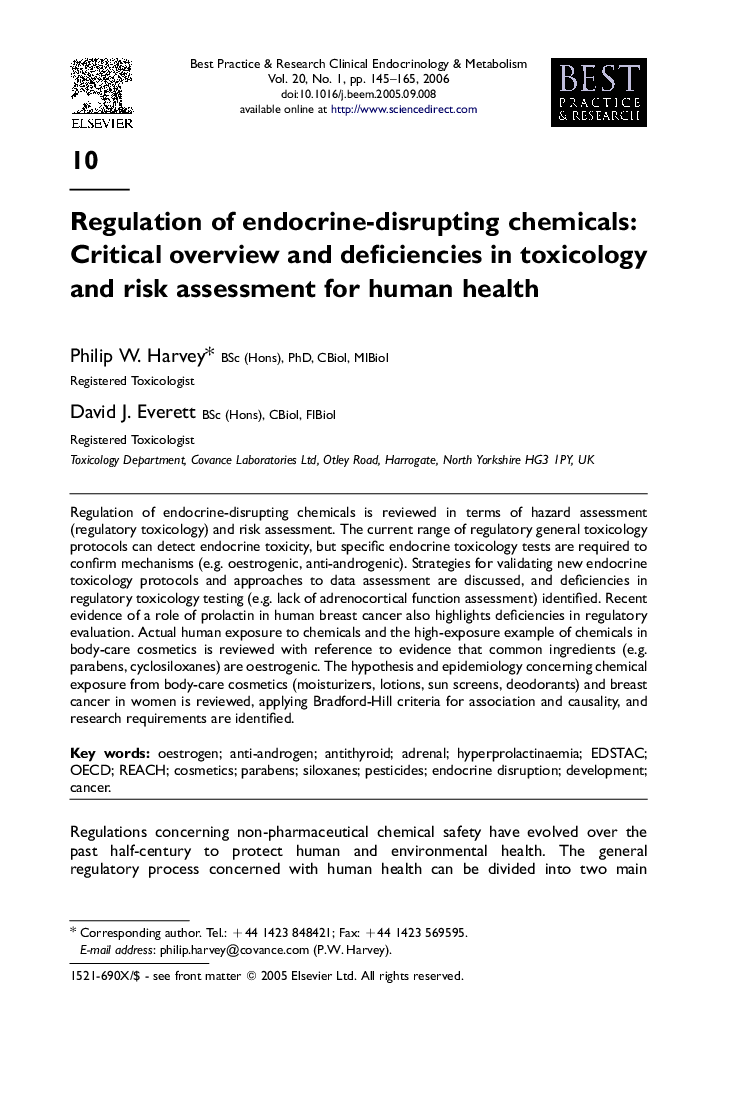| Article ID | Journal | Published Year | Pages | File Type |
|---|---|---|---|---|
| 2792286 | Best Practice & Research Clinical Endocrinology & Metabolism | 2006 | 21 Pages |
Regulation of endocrine-disrupting chemicals is reviewed in terms of hazard assessment (regulatory toxicology) and risk assessment. The current range of regulatory general toxicology protocols can detect endocrine toxicity, but specific endocrine toxicology tests are required to confirm mechanisms (e.g. oestrogenic, anti-androgenic). Strategies for validating new endocrine toxicology protocols and approaches to data assessment are discussed, and deficiencies in regulatory toxicology testing (e.g. lack of adrenocortical function assessment) identified. Recent evidence of a role of prolactin in human breast cancer also highlights deficiencies in regulatory evaluation. Actual human exposure to chemicals and the high-exposure example of chemicals in body-care cosmetics is reviewed with reference to evidence that common ingredients (e.g. parabens, cyclosiloxanes) are oestrogenic. The hypothesis and epidemiology concerning chemical exposure from body-care cosmetics (moisturizers, lotions, sun screens, deodorants) and breast cancer in women is reviewed, applying Bradford-Hill criteria for association and causality, and research requirements are identified.
